Evergreen
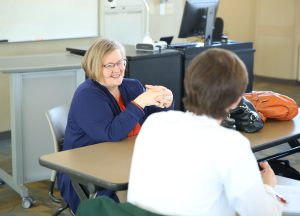
March 8, 2019
An Icelandic Adventure
Mary Hendrickson and her husband had been itching to do some traveling. Hendrickson had kicked around the idea of applying to become a Fulbright Scholar, or find something in the same vein. An opportunity of that nature would give her the chance to not only travel, but to teach and do research on another continent. Carol Lorenzen, a professor in the Division of Animal Sciences, found just the opportunity. Lorenzen alerted Hendrickson about a Fulbright opening in Iceland. It was a perfect fit. “This is all really Carol’s fault. She saw the posting and sent it right to me,” said…
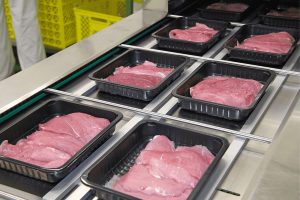
March 5, 2019
Study Finds Vast Opportunities for Food, Beverage & Forest Product Manufacturing in Missouri
Food, beverage and forest product manufacturing in the state of Missouri could soon be a more than $70 billion industry. A new study found significant potential for transforming Missouri agriculture commodities, in state, into value-added products. This study was the first step in the Show-Me-State Food, Beverage and Forest Products Manufacturing Initiative, a project of the Missouri Agricultural Foundation. TEConomy Partners, a firm specializing in research, analysis and strategy for innovation-based economic development, conducted the study. TEConomy Partners, a firm specializing in research, analysis and strategy for innovation-based economic development, conducted the study. TEConomy proposed three initiatives to grow Missouri…
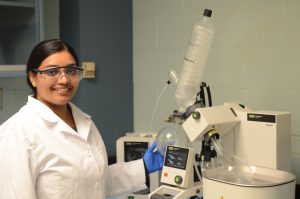
Feb. 8, 2019
Feasting on Famine: Fighting ‘Hidden Hunger’ and Food Waste
Like many people, Kiruba Krishnaswamy loves to eat. She even calls herself a foodie, and she loves to explore the cuisines of different cultures. Despite her lifelong love of food, Krishnaswamy, an assistant professor of biological engineering, had never heard of food engineering before she went to college, but she was intrigued by it. Krishnaswamy intends to spend the next five to 10 years at MU building out a zero hunger inter-disciplinary research team to grapple with global challenges. Thus, her research group, named FEAST (Food Engineering and Sustainable Technologies), will consist of both food scientists and engineers from CAFNR…
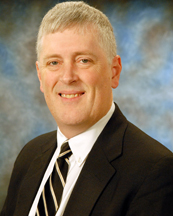
Nov. 7, 2018
Pat Westhoff Named to Howard Cowden Professorship
Pat Westhoff has been named as the newest holder of the Howard Cowden Professorship. Dr. Westhoff is a professor of agricultural and applied economics, and the director of the Food and Agricultural Policy Research Institute (FAPRI) at MU. His contribution to agricultural policy is critical to agricultural cooperatives and their member-owners in Missouri and across the nation. Dr. Westhoff and his FAPRI colleagues also work regularly with congressional staffers and USDA leaders to evaluate proposed agricultural legislation intended to provide farmers with a solid economic footing. The professorship is named for Howard Cowden, a southwest Missouri native who started his cooperative career with…
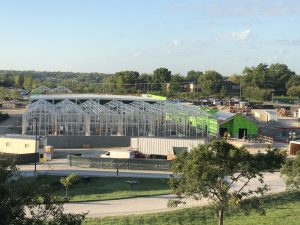
Sep. 25, 2018
A Culture of Collaboration
For nearly 150 years, scientists from the College of Agriculture, Food and Natural Resources at the University of Missouri have contributed to advancements around the globe. Many have heard the story of Charles Valentine Riley, an MU professor and Missouri’s first state entomologist, who saved the French wine industry from decimation by an insect, the grape phylloxera. The aphid had destroyed nearly one-third of French wine grapes in 25 years and threatened to annihilate the entire industry within another decade. Riley’s rescue involved grafting French vines onto resistant American rootstock. Others know that Aureomycin, one of the world’s first antibiotics…

July 12, 2018
Jon Simonsen Earns Golden Apple Award
Students selected to be a part of the Litton Leadership Scholars cohort engage in a yearlong seminar course centered on leadership and impactful change. The students have the opportunity learn from Jon Simonsen, a stellar leader. “Simo,” as Simonsen’s students affectionately refer to him, was surprised with a Golden Apple Award from the College of Agriculture, Food and Natural Resources during a trip to Chillicothe, Missouri, on April 26, where members of the cohort meet with the Jerry Litton Family Memorial Foundation. Simonsen’s wife Michelle, along with colleague John Tummons and former professor from The Ohio State University, Robert Birkenholz, were there to watch a surprised Simonsen receive the award. Simonsen is an associate professor, chair and leads the graduate studies program for agricultural leadership, communication and education. He also serves as…
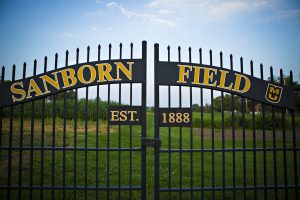
July 11, 2018
A Historic Celebration
The University of Missouri College of Agriculture, Food and Natural Resources (CAFNR) celebrated the 130th anniversary of Sanborn Field on Tuesday, July 24, on the MU campus. There were discussions and presentations, as well as displays of historical equipment and photos, in Eckles Hall. There were tours of Sanborn Field, too. Sanborn Field is the oldest, continuous experimental field west of the Mississippi River and the third oldest in the world. “Not only was it the 130th anniversary of Sanborn Field, it was the 101st year of the Duley-Miller Erosion Plots and the 70th anniversary of the announcement of the…
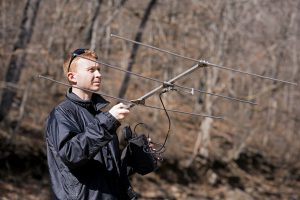
May 11, 2018
Covering Their Tracks
Whether a creature has feathers, fur or fins, it really doesn’t matter to Mike Byrne. He just wants to know where it’s going and what it might do when it gets there. Byrne is one of the newest faculty members in the College of Agriculture, Food and Natural Resources at the University of Missouri, arriving on campus in June 2017. The assistant professor of natural resources is an expert in the field of wildlife movement ecology. By learning more about why animals go where they go and do what they do, resource managers can improve conservation and species management efforts.
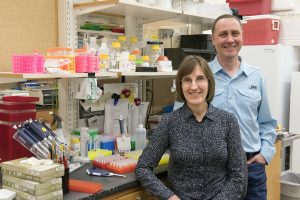
April 13, 2018
Breeding a Better Bee
The honey bee is as busy as ever. From almonds to zucchini, honey bees pollinate more than 90 agricultural crops in the United States — worth more than $15 billion annually. In 2017, the apiculture industry provided pollination services valued at nearly $320 million, according to the USDA’s National Agricultural Statistics Service. In addition, the bees also produced almost 150 million pounds of honey. Armed with a four-year, nearly $1 million grant from the USDA National Institute of Food and Agriculture, the CAFNR researchers will comb the honey bee genome in an attempt to find genetic markers predictive of resiliency…

Feb. 15, 2018
The Miracle Bean
When the Human Genome Project began in 1990, the goal was to sequence and map all of the genes that make up the human DNA. That project was completed in 2003 – and genome projects on many other species followed in subsequent years. Several crops grown in Missouri soon underwent genetic sequencing and mapping, including soybeans. The first soybean cultivar to be sequenced, “Williams 82,” was published in 2010. This widely-grown cultivar was chosen to represent the northern United States germplasm. For nearly a decade, this cultivar has served as the main soybean reference genome – the sequence that gives…